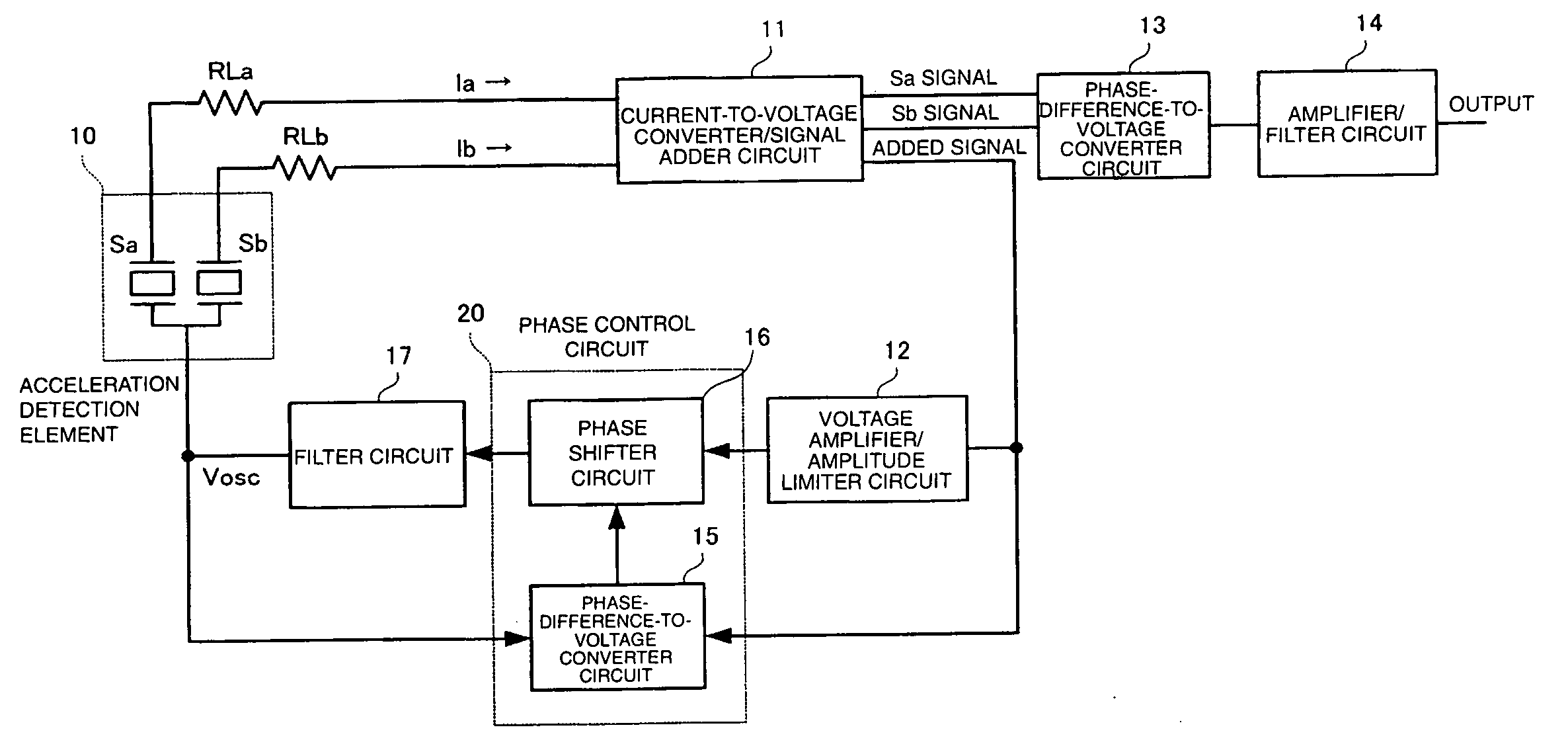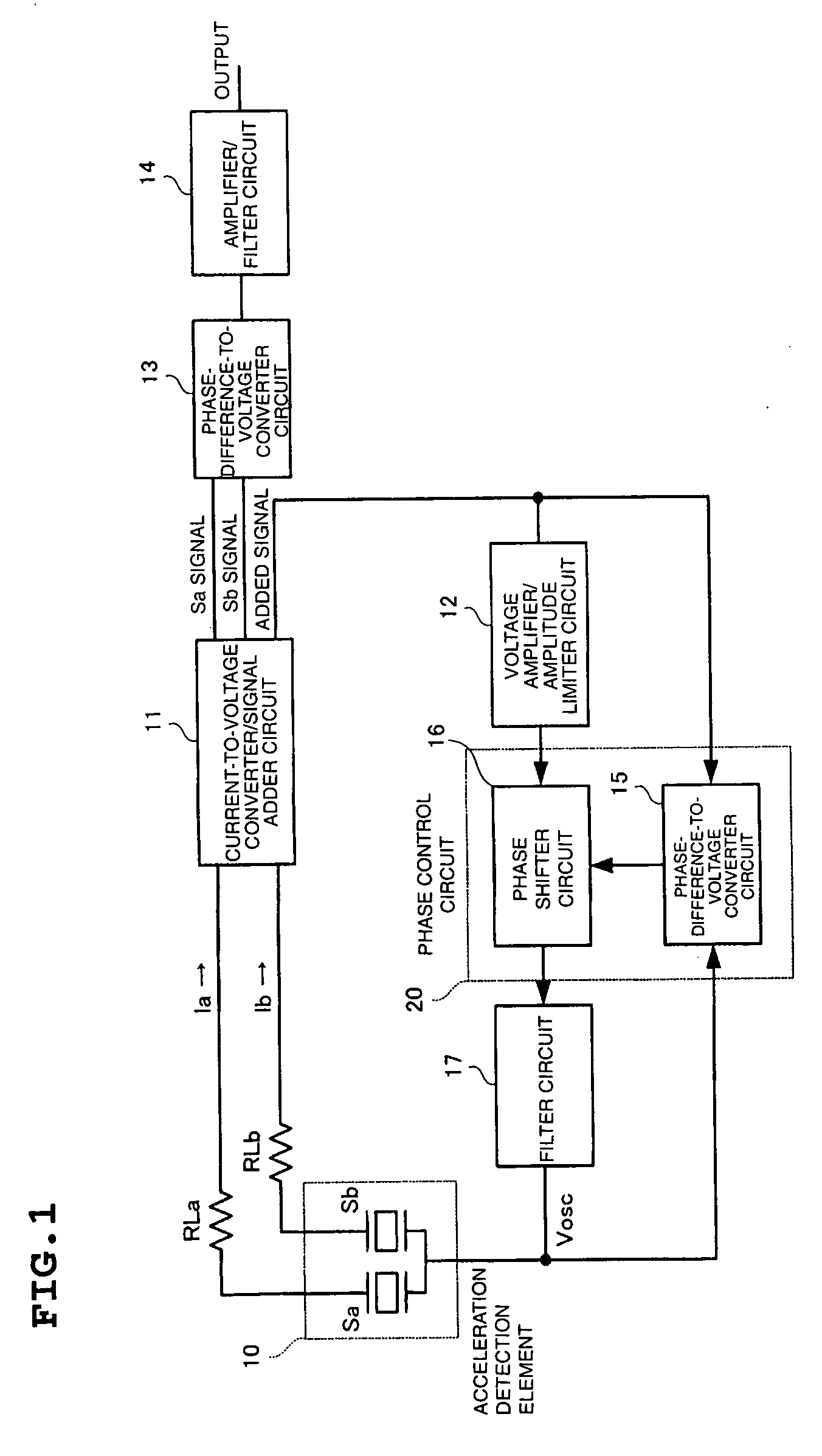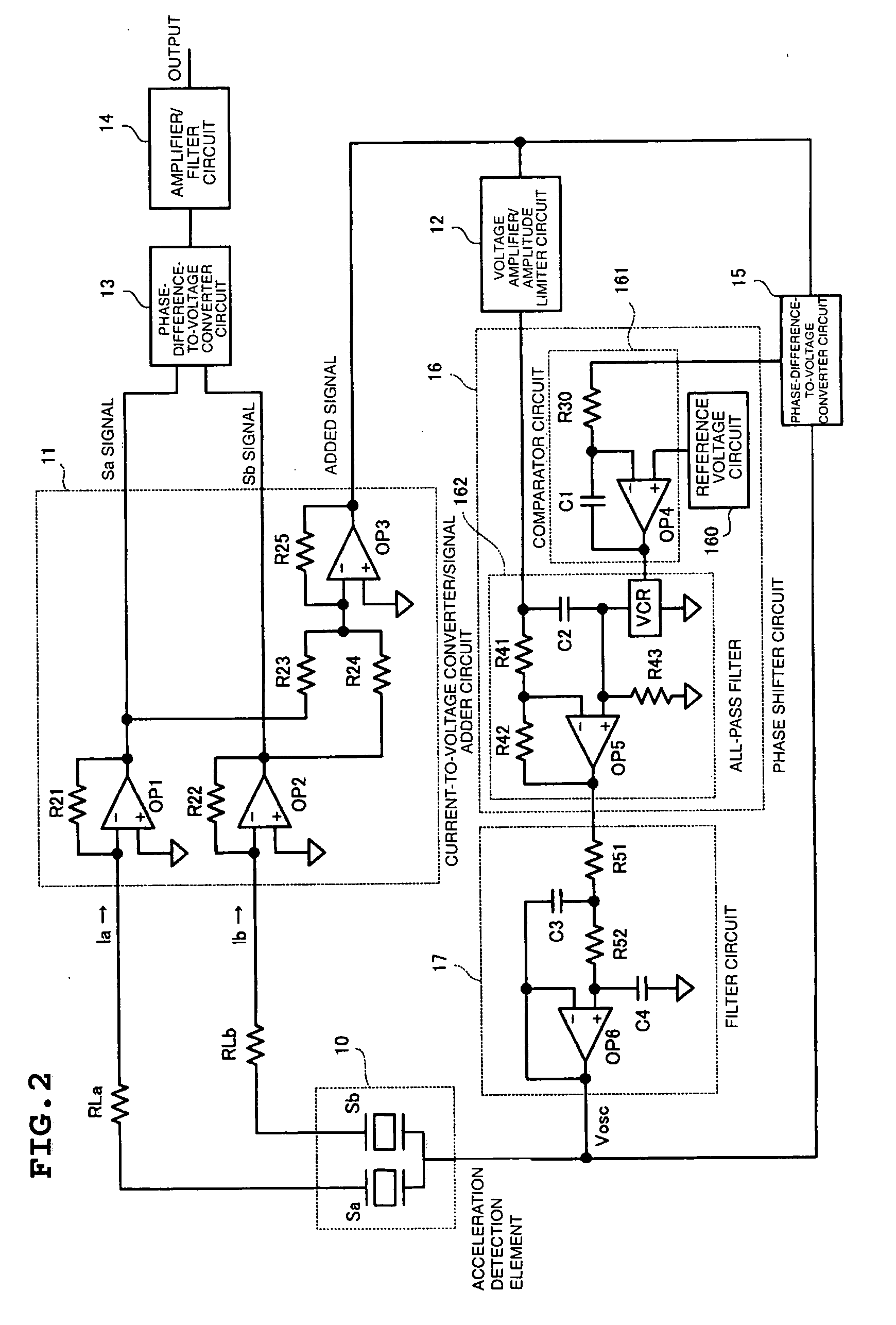Mechanical quantity sensor
a sensor and mechanical technology, applied in the direction of acceleration measurement using interia forces, turn-sensitive devices, instruments, etc., can solve the problems of sensor being incapable of normally operating as mechanical quantity sensors, abnormal oscillation, abnormal oscillation, etc., to prevent phase slope, increase the damage ratio, and reduce the change rate of acceleration detection sensitivity.
- Summary
- Abstract
- Description
- Claims
- Application Information
AI Technical Summary
Benefits of technology
Problems solved by technology
Method used
Image
Examples
first embodiment
[0045] The structure of an acceleration sensor will be described with reference to FIGS. 1 to 6.
[0046]FIG. 1 is a block diagram illustrating the overall structure of the acceleration sensor. An acceleration detection element 10 includes piezoelectric vibrators Sa and Sb receiving stresses generated by acceleration applied in opposite directions. A current-to-voltage converter / signal adder circuit 11 converts the current signals flowing through the piezoelectric vibrators Sa and Sb of the acceleration detection element 10 into voltage signals and outputs Sa and Sb signals. The current-to-voltage converter / signal adder circuit 11 also outputs an added signal obtained by adding the Sa and Sb signals.
[0047] A voltage amplifier / amplitude limiter circuit 12 amplifies the voltage of the added signal and limits its amplitude.
[0048] A phase control circuit 20 controls the phase of the output signal from the voltage amplifier / amplitude limiter circuit 12. A filter circuit 17 attenuates out...
second embodiment
[0071] Next, an acceleration sensor will be described with reference to FIG. 7.
[0072] The structure of the current-to-voltage converter / signal adder circuit 11 of the acceleration sensor according to the second embodiment differs from that of the sensor shown in FIG. 2. The structure of the current-to-voltage converter / signal adder circuit 11 according to the second embodiment adds voltages generated in resistors RLa and RLb when electric currents Ia and Ib flowing through piezoelectric vibrators Sa and Sb, respectively, of the acceleration detection element 10 flow through resistors RLa and RLb respectively. Operational amplifier OP1 and OP2 each have significantly high input impedance and constitute a voltage follower circuit the gain of that is 1. An operational amplifier OP3 and resistors R25 and R26 constitute a noninverting amplifier circuit. The noninverting amplifier circuit and resistors R23 and R24 constitute an adder circuit that receives an added signal generated from t...
PUM
| Property | Measurement | Unit |
|---|---|---|
| temperature | aaaaa | aaaaa |
| temperature | aaaaa | aaaaa |
| damping ratio | aaaaa | aaaaa |
Abstract
Description
Claims
Application Information
 Login to View More
Login to View More - R&D
- Intellectual Property
- Life Sciences
- Materials
- Tech Scout
- Unparalleled Data Quality
- Higher Quality Content
- 60% Fewer Hallucinations
Browse by: Latest US Patents, China's latest patents, Technical Efficacy Thesaurus, Application Domain, Technology Topic, Popular Technical Reports.
© 2025 PatSnap. All rights reserved.Legal|Privacy policy|Modern Slavery Act Transparency Statement|Sitemap|About US| Contact US: help@patsnap.com



